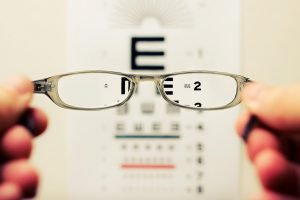 There’s a lot of discussion and disagreement about the beneficial effects of exercise on your vision. Even though the jury is still out about whether it has a direct effect on near and far sightedness. Some say exercising, other than those for the eye itself, has no effect on your vision when it comes to near and far sightedness. Some other studies show it can boost vision and reduce the chance of serious eye conditions, such as macular degeneration and glaucoma, since it improves blood flow to the eye, lowers intraocular pressure and protects the ganglion cells in the retina. Some studies show that just 20 minutes of moderate exercise four times every week may reduce vision problems and improve blood flow to the optic nerve and retina.
There’s a lot of discussion and disagreement about the beneficial effects of exercise on your vision. Even though the jury is still out about whether it has a direct effect on near and far sightedness. Some say exercising, other than those for the eye itself, has no effect on your vision when it comes to near and far sightedness. Some other studies show it can boost vision and reduce the chance of serious eye conditions, such as macular degeneration and glaucoma, since it improves blood flow to the eye, lowers intraocular pressure and protects the ganglion cells in the retina. Some studies show that just 20 minutes of moderate exercise four times every week may reduce vision problems and improve blood flow to the optic nerve and retina.
Stress plays havoc with vision.
When you’re down to the wire and you need every second to get that important document prepared for work, it’s often the time when you’re under stress and may even start feeling it with blurry vision, eye pain, sensitivity to light, increased or the appearance of floaters or watery eyes. It’s more than the computer screen that causes these conditions, it’s the pressure you’re under and the flight or fight syndrome caused by stress. That stress not only makes your pupils dilate, which can cause headaches and light sensitivity. It also causes the muscles in your face to tighten and decreases the blood flow. That makes vision blurry and gives you headaches. Take the time to get about 20 minutes of exercise, even if it’s a brisk walk or running up and down the stairs. It burns off the hormones of stress and helps get you back on track.
Visual exercises for sports improves more than peripheral vision.
There’s no doubt about the fact that the better the athlete the better their peripheral vision, depth perception, focus flexibility and dynamic visual acuity. Some of these abilities improved naturally and helped enhance athletic performance. Others actually occurred because of practice in the sport of choice. The Air Force Academy helps enhance their athletes performance by using three simple exercises. Two involve reading eye charts at a distance and close or on the left and right quickly to improve focus. The third is catching a bouncing ball for hand eye acuity. These simulate the actions of the eyes when playing sports and improve the player’s vision. They could be a huge aid for yours.
Exercise helps in the prevention of conditions that affect vision and even may improve those conditions.
Three conditions that affect eye health are cataracts, wet age-related macular degeneration—AMD and glaucoma. A study in 2013 and another in 2016 showed that running or a brisk walk can help decrease the risk of cataracts or slow the progress. Another study followed 4000 older adults for 15 years and showed exercise reduced the risk of AMD. Doctors also use exercise to reduce high intraocular pressure in the eye as a treatment for glaucoma.
- Even people with floaters can benefit from a diet high in anti-inflammatory foods, plenty of nutrients and antioxidants, plus exercise. Start by cutting out sugary foods and starchy foods.
- Always check with your eye doctor first to make sure eye conditions aren’t something more serious that needs immediate attention, particularly if you’re diabetic or have eye conditions that warrant it.
- Use your vision. Countries that put an emphasis on sports and outdoor activities have the lowest occurrence of nearsightedness. The more you use your eyes, the stronger they become. Take 20 minutes a day to walk or run without wearing your glasses and focus on seeing in the distance.
- Adding healthy fat (think avocados, salmon, coconut oil and nuts) to your diet, dark leafy veggies, foods high in vitamin C (raw red peppers), vitamin A (sweet potatoes or other orange foods containing beta-carotene, food high in zinc (chick peas) and foods high in zinc and lutein and zeaxanthin (Eggs contain all three) can help your eyes.
